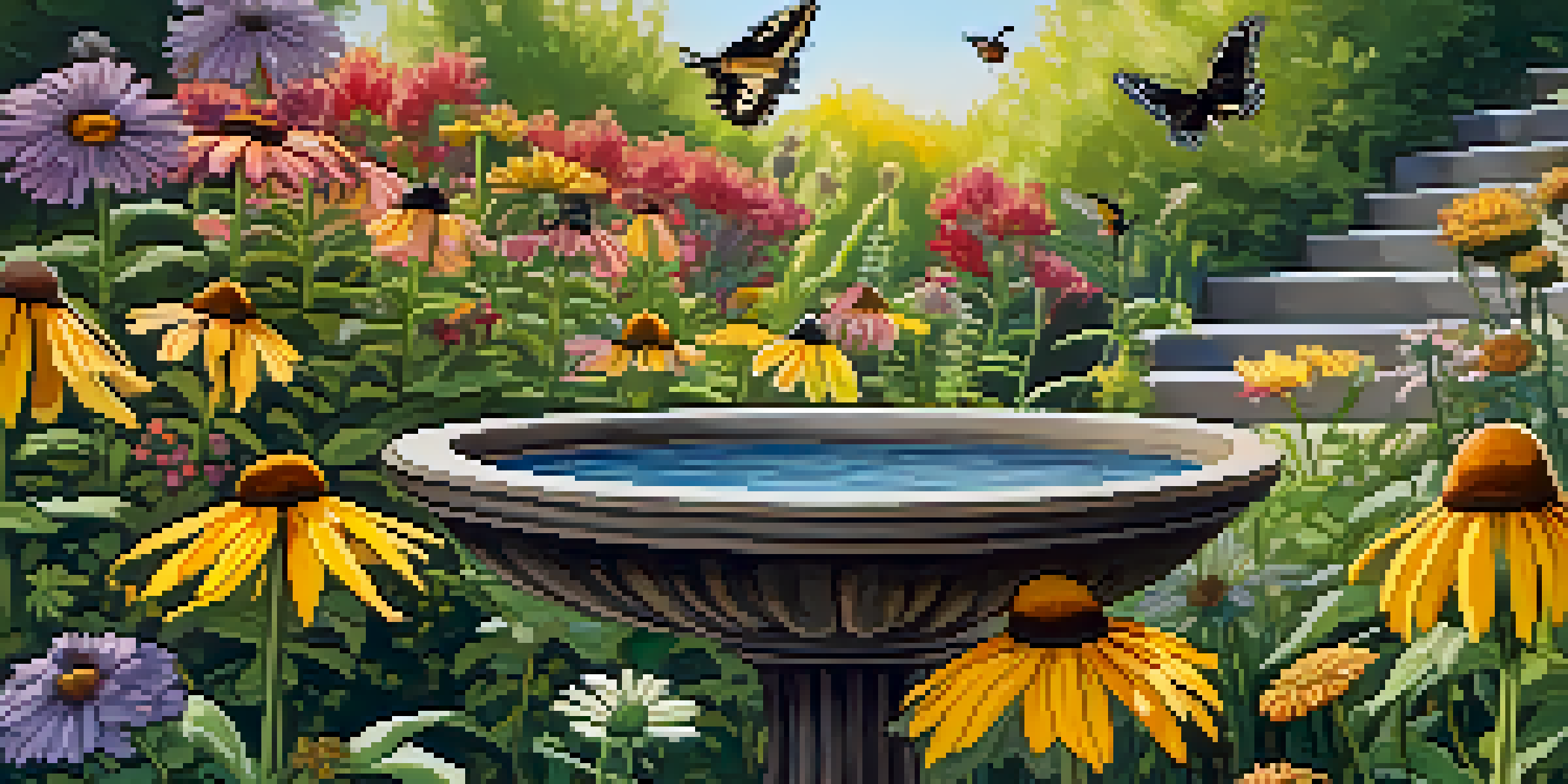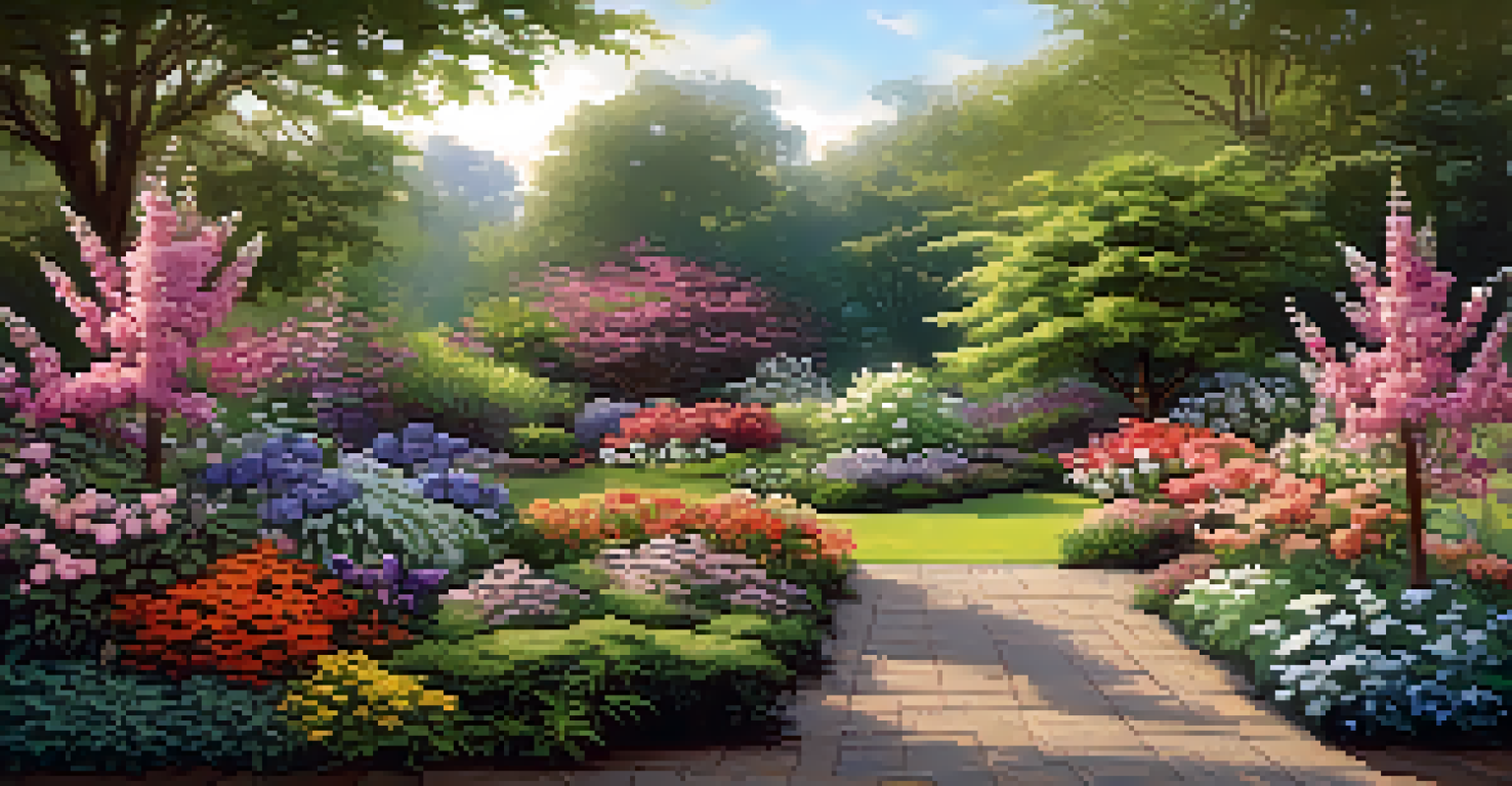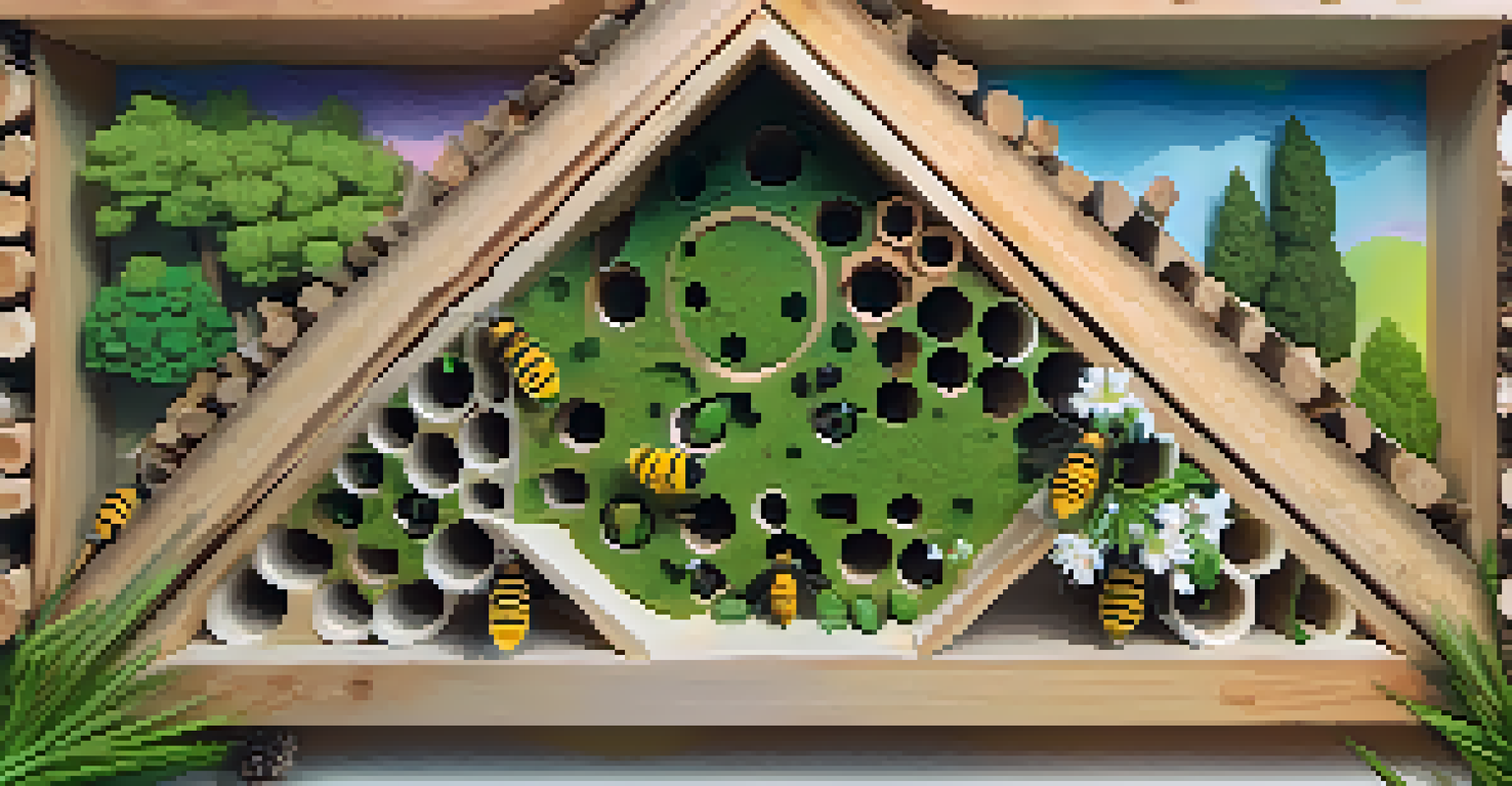How to Create a Pollinator-Friendly Garden Space Easily

Understanding the Importance of Pollinators
Pollinators like bees, butterflies, and hummingbirds play a crucial role in our ecosystem. They help in the reproduction of plants by transferring pollen, which leads to the production of fruits and seeds. Without them, many of our favorite foods and beautiful flowers would simply vanish.
If we can teach people about wildlife, they will be touched. They will see the world differently. They will see that they are a part of the world, and that they can make a difference.
Creating a habitat that welcomes these vital creatures not only supports biodiversity but also enhances the beauty of your garden. Imagine a space buzzing with life, where colorful butterflies flit from flower to flower. It's not just beneficial for nature; it can also be a delightful experience for you and your family.
So, why not take a few simple steps to make your garden a haven for pollinators? With a little planning and creativity, you can transform your outdoor space into a thriving ecosystem.
Choosing the Right Plants for Your Garden
The first step in creating a pollinator-friendly garden is selecting the right plants. Native plants are often the best choice because they provide the food and habitat that local pollinators need. Consider flowers like coneflowers, black-eyed Susans, and milkweed, which are not only beautiful but also enticing to bees and butterflies.

It's also important to have a variety of plants that bloom at different times throughout the growing season. This ensures that there's always something flowering, providing a continuous food source for pollinators. Think of your garden as a buffet, where different dishes are available at different times!
Pollinators are vital to ecosystems
Bees, butterflies, and hummingbirds play a crucial role in plant reproduction, affecting food production and biodiversity.
Lastly, aim for clusters of the same type of flower. Pollinators are more likely to visit a dense patch of flowers rather than a single bloom scattered across your garden. This grouping makes it easier for them to gather nectar and pollen efficiently.
Creating a Diverse Habitat with Layers
A diverse garden not only looks more appealing but also provides a variety of habitats for different species. Incorporating layers into your garden—such as tall plants, mid-height flowers, and ground covers—creates a rich environment for pollinators. Think of it as building a multi-story habitat, where each level caters to different creatures.
The best time to plant a tree was twenty years ago. The second best time is now.
You can also add features like shrubs and small trees, which offer shelter and nesting sites. For example, a butterfly bush can provide a resting spot for butterflies, while a flowering dogwood tree offers blossoms sought after by bees. This diversity encourages a wider range of pollinators to make your garden their home.
Don't forget about the ground layer! Ground covers, like clover or creeping thyme, not only suppress weeds but also provide additional food sources for pollinators. With these layers, you create a vibrant, welcoming ecosystem that benefits both wildlife and your gardening efforts.
Implementing Sustainable Gardening Practices
Sustainable gardening practices are essential for maintaining a healthy environment for your pollinators. Avoid using chemical pesticides and herbicides, as these can harm beneficial insects. Instead, consider natural alternatives, like neem oil or insecticidal soap, which are less harmful to pollinators.
Companion planting is another effective method to deter pests while supporting your plants. For example, planting marigolds alongside vegetables can help keep aphids away. This strategy not only protects your garden but also enhances its appeal to pollinators.
Diverse plants attract more pollinators
Choosing a variety of native plants that bloom at different times ensures a continuous food source for pollinators.
Additionally, practicing water conservation, like using mulch to retain moisture, can create a healthier garden ecosystem. By nurturing your space sustainably, you provide a safe sanctuary for pollinators and contribute positively to the environment.
Creating Nesting Sites for Pollinators
While flowers are crucial for feeding pollinators, providing nesting sites is equally important. Different species have unique nesting preferences; for instance, many bees nest in the ground, while others prefer hollow stems or small cavities. You can create a variety of nesting sites to attract more pollinators to your garden.
Consider leaving a patch of bare soil for ground-nesting bees, as they require undisturbed areas to dig their nests. You can also leave some dead plant stems standing over winter, which provides natural cavities for bees. This simple step boosts the overall habitat quality of your garden.
Additionally, creating a bee hotel by drilling holes in untreated wood can offer a cozy home for solitary bees. These little efforts can make your garden a popular destination for pollinators looking for a safe place to raise their young.
Water Sources: A Must-Have for Your Garden
Just like humans, pollinators need water to survive. Including a water source in your garden can make it even more inviting for these important creatures. A shallow birdbath or a small pond with sloping edges can serve as an excellent water station for bees and butterflies.
To ensure the water source is accessible, consider adding stones or pebbles for landing spots. Pollinators often need a safe place to rest while they drink, so these features not only provide hydration but also enhance the overall look of your garden.
Community efforts boost pollinator health
Engaging neighbors and local groups in pollinator protection initiatives amplifies the positive impact on local ecosystems.
Remember to keep the water fresh and clean, especially during hot weather. A simple change of water every few days can help maintain a healthy environment, making your garden a buzzing hub of activity.
Engaging the Community in Pollinator Protection
Creating a pollinator-friendly garden is a wonderful way to engage with your community. By sharing your knowledge and experience, you can inspire your neighbors to take similar steps, amplifying the impact of your efforts. Consider hosting a garden tour or a workshop to spread the word about the importance of pollinators.
You can also collaborate with local gardening groups or schools to establish community gardens focused on pollinator health. These projects not only beautify neighborhoods but also create a collective effort to support local wildlife.

By fostering a sense of community around pollinator protection, you contribute to a larger movement. Every small garden counts, and together, you can create a network of thriving ecosystems that benefit everyone.